Kumamoto Guide: Access, 27 Sightseeing Spots, Festivals and More!

Kumamoto is a prefecture located in the Kyushu region with many delicious foods, hot springs and natural scenery that would make a vacation here very enjoyable. Let this guide help you get around and experience the best of Kumamoto.
What Kind of Place Is Kumamoto?
Kumamoto is a prefecture in the Kyushu area, located approximately 890 km from Tokyo. Kumamoto is known for its abundant agricultural products such as mandarin oranges, watermelons, melons, tomato, eggplants, jelly ear mushrooms, and many other fruits and vegetables.
Kumamoto has Japan's largest caldera (crater formed by volcanic activity) at Mt. Aso along with many hot springs around the Aso area (such as the Tsuetate Onsen and Kurokawa Onsen) that are very famous. Other spots include Kikuchi Gorge and Kuma River that are wonderful scenic spots as well.
Let's discover the charm of Kumamoto city, which has been praised as the "City of Forests" by the Japanese writer Sousuke Natsume for its lush greens among the cityscape.
Contents:
1. How To Get To Kumamoto
2. Transportation in Kumamoto
3. Area Guide to Kumamoto
4. 27 Recommended Tourist Spots in Kumamoto
5. Festivals and Events in Kumamoto
6. Local Dishes of Kumamoto
7. Souvenirs from Kumamoto
8. Phrase in the Kumamoto Dialect You Can Use during Your Trip
9. Hotels in Kumamoto
10. Weather and Attire in Kumamoto
How To Get To Kumamoto
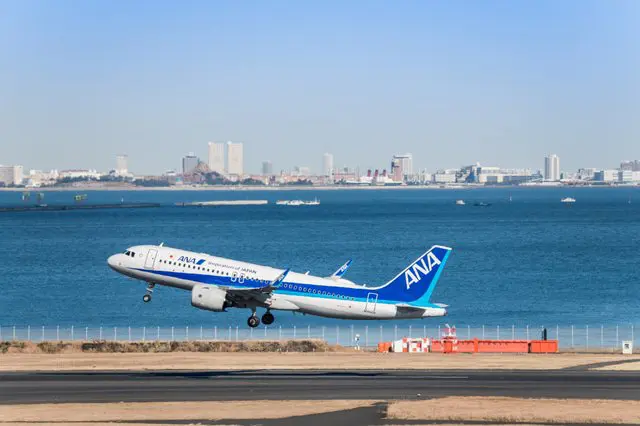
Going from Haneda Airport
There are fifteen flights leaving Tokyo to Kumamoto daily from Haneda airport. It takes approximately one hour and a half and costs 10,000-40,000 yen one way. For those who wish to keep the cost down for flights, check the prices out for the low cost carrier (LCC), Solaseed Air.
Going from Narita Airport
From Narita Airport, there are two flights operated by the LCC Jetstar every day to Kumamoto. Prices range from 6,000-15,000 yen one way and it is about a two-hour flight.
Going from Tokyo Station
From Tokyo Station, ride use the bullet train. At Shin-Osaka Station, transfer to the Kagoshima Chuo bound train, you can get off at the main hub of the city, Kumamoto Station. It costs 27,820 yen one-way and takes about 6 hours.
Please note that you may not use the unlimited JR bus and train pass, the Japan Rail Pass, on the "Nozomi" and "Mizuho" lines on the Kyushu bullet train. When you transfer to the train from Shin-Osaka bound for Kagoshima, please use "Hikari", "Sakura", "Kodama", and "Tsubame" lines.
Going from Fukuoka, Nagasaki, and Kagoshima
From Fukuoka, Nagasaki, and Kagoshima, which are located in the same Kyushu area as Kumamoto, an express bus is useful. You can go to Kumamoto for approximately 3,000-5,000 yen and it takes about 2-3 hours.
Transportation in Kumamoto
Within Kumamoto Prefecture, there are the JR Kyushu lines, city bus, and city trains running throughout the area. If you plan on touring around Kumamoto City, using the city bus or train is useful.
JR Lines
In Kumamoto, there is the Kagoshima Main Line that connects the north and south of Kumamoto, the Houhi Main Line that connects Kumamoto City and Aso area, and the Hisatsu Line connecting Yatsushiro and Hitoyoshi in the southern area of the prefecture.
Bus
The bus is an important method of transportation for the citizens of Kumamoto. It runs all over the city and is very convenient.
City Train
Starting from the main Kumamoto Station, the city train connects Kamikumamoto Station, Tasakibashi, and Kengun. It stops at major tourist spots such as Kumamoto castle, Kamitoori, Shimotoori, and Suizenji park that is great when touring around the city. You can ride the city train for 170 yen for adults and 90 yen for children.
Ferry
Ocean Arrow is a ferry connecting Kumamoto and Shimabara city in Nagasaki prefecture in 30 minutes. It costs 1000 yen for adults and 500 yen for children in elementary school and below for one way. One car can also board starting from 3100 yen. It is a handy method of transportation when touring around the Kyushu area.
Taxi and Car Rental
In front of the Kumamoto and Kamikumamoto Stations, there are spots to catch a taxi. Within central Kumamoto city, there are many car rental shops as well. While public transportation is enough to get around major tourist spots in Kumamoto, using a taxi or car rental is also handy if you would like to take your time touring around the area.
Area Guide to Kumamoto
Here, we would like to introduce the unique points, specialties, and the various sightseeing spots of Kumamoto.
Kumamoto City Area

Kumamoto's major business district is centered around Toorichosuji and Suidocho areas. It is known to have many offices and government buildings along with department stores and popular shopping districts called Kamicho and Shimocho. Famous tourist spots such as Kumamoto Castle and Suizenji Park are also located near this area.
Northern Area: Koushi, Oguni, and Aso
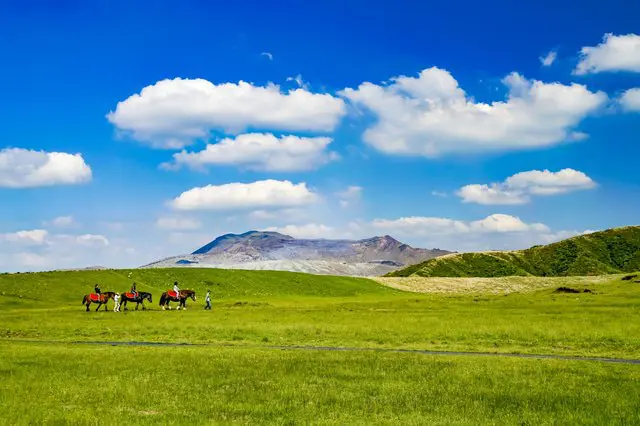
The northern area of Kumamoto is known for the vast nature surrounding the grand Mt. Aso. There are plenty of tourist spots such as Daikanbou mountain in Aso city or the beautiful fields of Kusasenrigahama. Out in Oguni town, there are the famed Tsuetate hot springs. Another site that is great to see is the historical Tsujun Bridge aqueduct that was built back in the Edo period.
North West Area: Yamaga, Kikuchi, Tamana, Arao, and Ueki
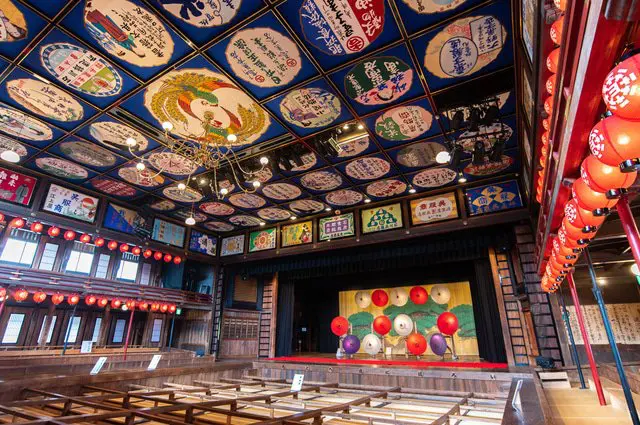
Photo courtesy of Kumamoto Prefecture
The northwestern area is known for their hot springs such as Tamana hot springs, Ueki hot springs, Yamaga hot springs, and Hirayama hot springs. At the Yachiyoza theater, nominated as an important cultural property of Japan, you will be able to experience the historical and elaborate feel of the Meiji period.
Yamaga city has nearly three hundred ancient Japanese burial mounds, such as the Chibusan burial mound which dates back to 1,500 years ago. Within the city, you will be able to look at rare artifacts found within the mounds at the Kumamoto Prefectural Ancient Burial Mound Museum. You will also be able to experience making a "Magatama" charm that was worn by the ancient Japanese.
In Arao city, you can visit Kumamoto's only amusement park, Greenland. The northwestern area of Kumamoto is a great place to bring families for an enjoyable time.
Southern Area: Uto, Yatsushiro, Shiranuhi, Minamata, Hitoyoshi, Ashikita
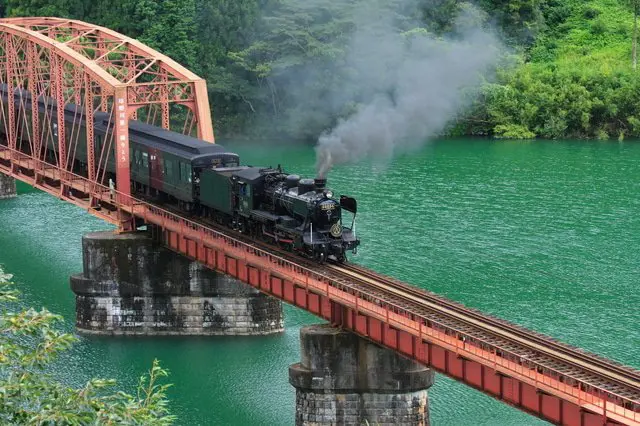
In the southern area, Yatsushiro is known as the castle town filled with great natural scenery around Kumagawa River. The town has many historical structures still standing and is a great place to see a classic Japanese scenery. If you wish to explore Hitoyoshi city, the panoramic view of Kumagawa River from the steam locomotive Hitoyoshi is a sight that is not to be missed.
If you love history, the Sashiki Castle remains in Ashikita, and Yatsushiro castle remains in Yatsushiro are also wonderful spots to see.
Amakusa Area
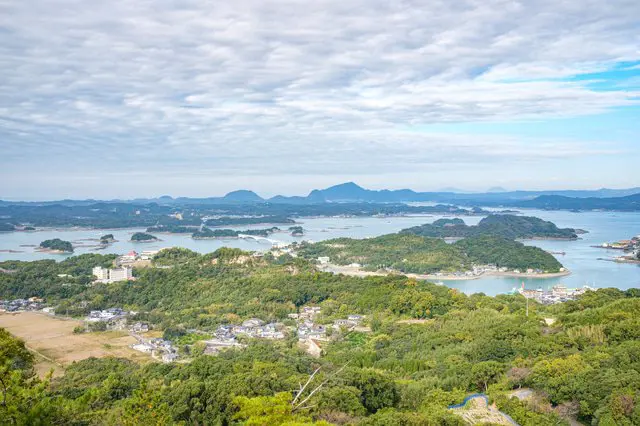
Located in the southwestern area of the prefecture, Amakusa is a town surrounded by the sea. It is known as the hometown of Shirou Amakusa, who was known to have gone against the government by forming a revolution when the government once forbade Christianity. Within Amakusa, there are still Christian cemeteries and many historical Christian documents on display at the Amakusa Christian Museum.
Amakusa has local dishes that are well known as well. The Amakusa Daio chicken is a delicacy that can be eaten in many ways such as yakitori chicken skewers, chicken stew or even chicken sashimi. The fresh seafood is also a well known local specialty too.
27 Recommended Tourist Spots in Kumamoto
In Kumamoto, there are plenty of historical spots such as Kumamoto Castle and natural spots in the Aso region that can be enjoyed.
Guided tours and activities in Kumamoto are available to book online via Klook. See below for details and reservations:
Half-Day Tour of Aso, Tour of Kumamoto Castle, Kurokawa Onsen, and More (leaves from Fukuoka)
1. Kumamoto Castle
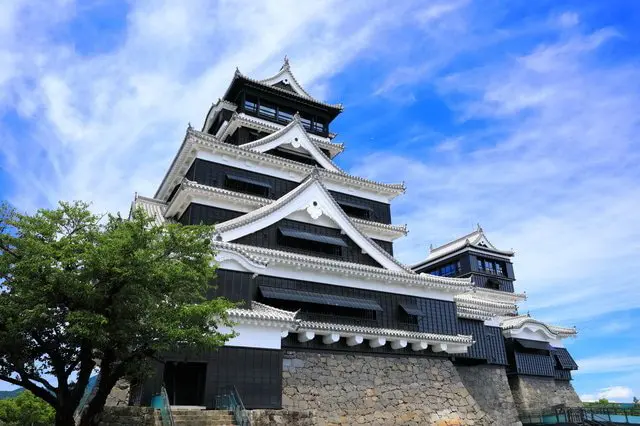
Photo courtesy of Kumamoto Prefecture
As the symbol of Kumamoto, Kumamoto Castle was expanded immensely by the warlord Kiyomasa Kato 500 years ago during the time he governed the area. However, the castle was burnt down during the Satsuma Rebellion, also known as Japan's last civil war, and then was reconstructed in 1960. One of the main highlights of the castle includes the tragic story of the beautiful Chinese maiden Wang Zhaojun painted on the walls and sliding doors using gold. The gorgeous hall of Zhaojun is a sight to see.
Address: Kumamoto, Kumamoto city, Chuo ward, Honmaru 1-1
Website: Kumamoto Castle
Tour of Kumamoto Castle, Kurokawa Onsen, and More (leaves from Fukuoka)
2. Yachiyoza

Photo courtesy of Kumamoto Prefecture
This is a theater constructed in the Meiji period and also an important cultural heritage asset of Japan. Even today, plays and kabuki performances are held here.
Address: Kumamoto, Yamaga city, Yamaga 1499
Website: Yachiyoza (Japanese)
3. Tsujun Bridge
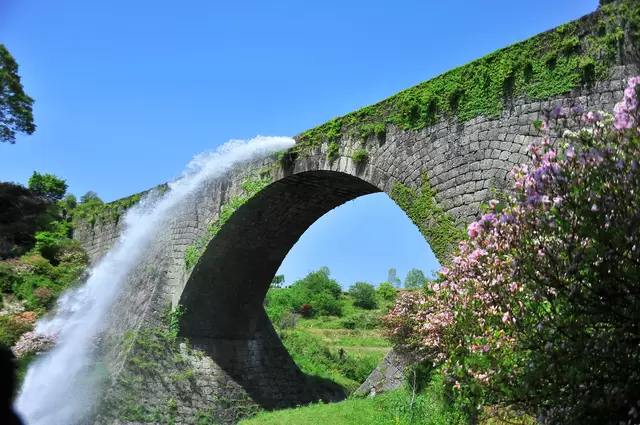
This aqueduct is constructed using high-level construction methods and sends water to Shiraito Daichi, which is located in an elevated area. The bridge is considered to be an important cultural property of Japan and many tourists visit to witness the immense amount of water being spilled out from the middle of the bridge. Note: After the Kumamoto earthquake, it is closed to the public as of November 2016.
Address: Kumamoto, Kamimashiki district, Yamato, Nagahara
Website: Tsujun Bridge (Japanese)
4. Amakusa Christian Museum
Here, you will find important documents and artifacts related to the history of the Christians of Amakusa and Japan's largest rebellion, the Amakusa Shimabara Rebellion.
Address: Kumamoto, Amakusa city, Funenoomachi 19-52
Website: Amakusa Christian Museum (Japanese)
5. Ooe Tenshudo
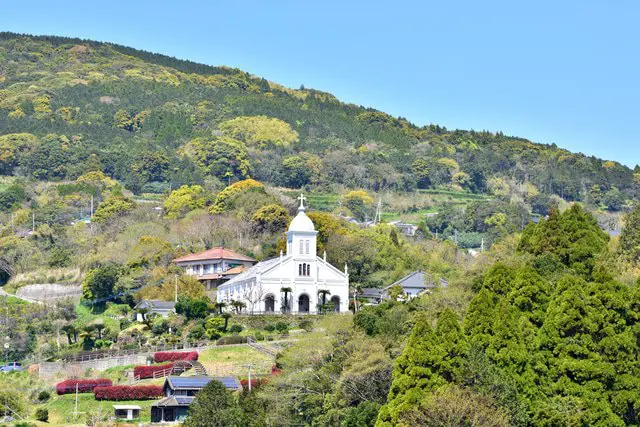
After Christianity became legal in 1933, this church was constructed with the help of the locals and the French missionary Father Garnier who spent his life teaching Christianity to the people of Amakusa. The warm Romanesque style construction and the interior are the charms of this church.
Address: Kumamoto, Amakusa city, Amakusa, Ooe 1782
6. Yatsushiro Castle Remains
400 years ago, there was a castle of Yatsushiro constructed in this very location, however, today only the exterior stone walls only remain. Currently, the "District of the Yatsushiro Castle Remains" is a part of Japan's historical landmarks.
Address: Kumamoto, Yatsushiro city, Matsuejo 7-34
7. Manda Coal Mine
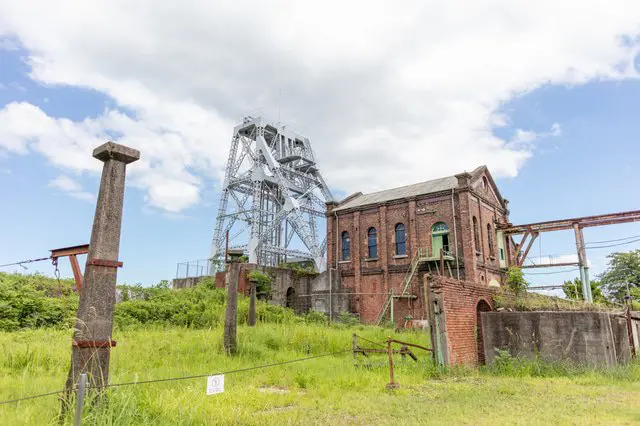
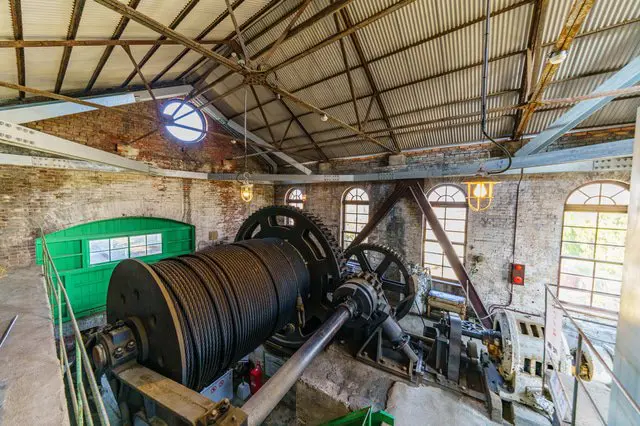
Located in Arao city, these are the remains of the coal mine that supported the growth of Japan. This mine operated from the end of the 1800s to the beginning of 1900s and had two large vertical shafts, making it one of Japan's largest mines. It has been classified as a World Heritage site as a "site that supported Japan's industrial revolution in the Meiji period with iron, steel, ship building and coal mining". You will be able to tour around not only the outside but the shafts and machinery room as well.
Address: Kumamoto, Arao city, Haramanda 200-2
Website: Manda Coal Mine (Japanese)
8. Kamitori Arcade / Namikizaka
Many cafes, shops carrying various items, classic bookshops, manju bun shops, and jewelry shops stand side by side in this spot. Namikizaka extends north from the edge of Kamitori. There are many fancy second-hand clothing shops, import goods, historical confectionery shops, and cafes aligning the streets. Both are great to leisurely stroll and shop around.
Address: Kumamoto, Kumamoto city, Chuo Ward, Kamitori
Website: Kamitori Arcade (Japanese)
9. Shimotori Arcade / Sunroad Shinshigai
A shopping arcade mainly with restaurants and shops carrying a collection of goods. Unlike the calm Kamitori, this area is filled with middle school, high school, and overall a younger crowd. The Sunroad Shinshigai extends southward from the edge of Shimotori and has more amusement facilities such as movie theaters, game centers, and pachinko shops.
Address: Kumamoto, Kumamoto city, Chuo, Shimotori
Website: Shimotori Arcade
10. Ginzadori
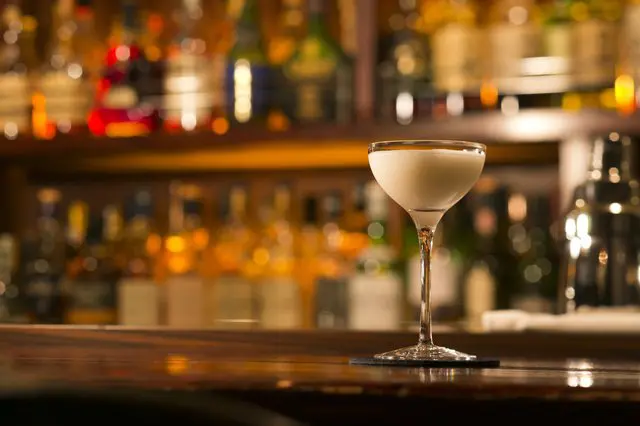
Ginzadori is a street that intersects Shimotori in the middle. It has many great izakayas and many locals tend to have a drink after work in this area.
11. Mitsui Greenland
The only theme park of Kumamoto is located in Arao city. In the massive area, there are over eighty attractions to enjoy.
Address: Kumamoto, Arao city, Midorigaoka
Website: Mitsui Greenland (Japanese)
12. Aso Farm Land
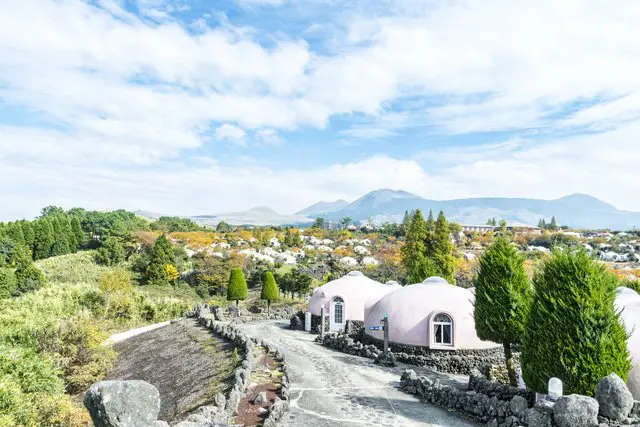
Photo courtesy of Kumamoto prefecture
Located in the southern Aso village, Aso farm land has a collection of entertainment facilities such as athletic centers, zoos, hot springs, restaurants, and accommodations. There are hotels in the shape of domes that have uniquely decorated rooms with pictures of dinosaurs, watermelons, soccer balls painted on the walls here as well.
Address: Kumamoto, Aso district, Minami Aso, Kawayo 5579-3
Website: Aso Farm Land
13. Dolphin Marine World
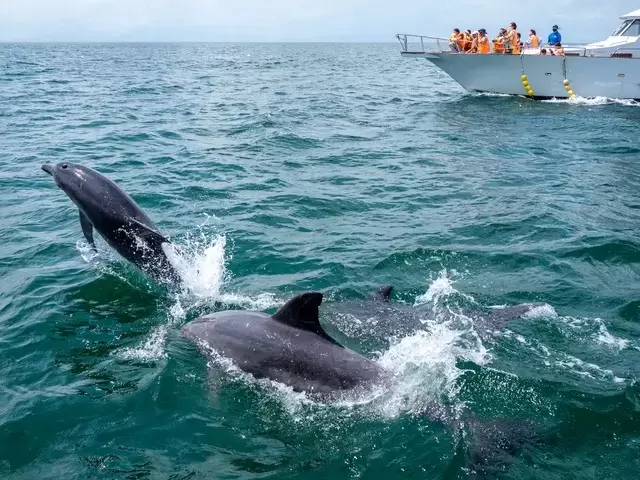
If you wish to spot some wild dolphins in Amakusa, this is a must go place. You can simply hop on a boat and the captain will take you to the area where you can spot wild dolphins. The ticket costs 2500 yen for adults and 1500 yen for children.
Address: Kumamoto, Amakusa city, Itsuwamachi Futae 2977
Website: Dolphin Marine World (Japanese)
14. Aso Cuddly Dominion
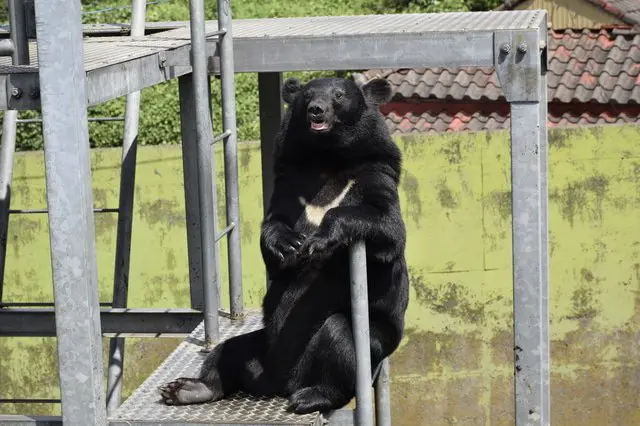
Cuddly teddy bear lovers unite. Here, you will be able to meet seven different types of bears such as the Japanese black bear, Grizzly bear, and the Ussuri brown bear. Along with the 200 bears, there is a separate booth where you can play with various types of dogs and cats from all over the world.
Address: Kumamoto, Aso city, Kurokawa 2163
Website: Aso Cuddly Dominion (Japanese)
15. Kumamoto City Botanical Garden
A botanical garden located approximately 15 minutes by train from Kumamoto castle. It not only has a garden but also an amusement area and is a great recreation spot for citizens of Kumamoto.
Address: Kumamoto, Kumamoto city, Higashi ward Kengun 5-14-2
Website: Kumamoto City Botanical Garden
16. Kumamoto Prefectural Ancient Burial Mound Museum
This is a museum located in Yamaga city. It has replicas of ancient burial mounds and other artifacts on display that were found in the mounds in the city.
Address: Kumamoto, Yamaga city, Kaomachi Iwabaru 3085
Website: Kumamoto Prefectural Ancient Burial Mound Museum (Japanese)
17. Suizenji Jojuen
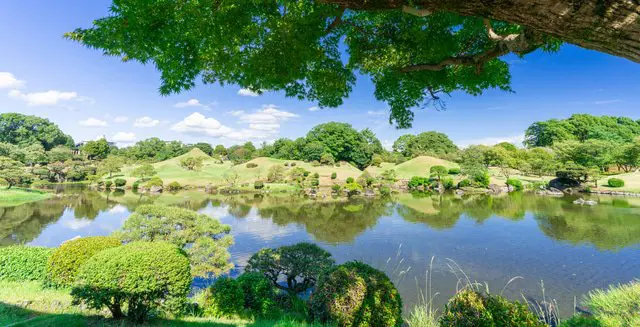
After a ten minute ride on the city train from the Kumamoto castle, you will find a beautiful Japanese-style garden. Also known as the Suizenji park, it is a scenic garden that was constructed 400 years ago.
Address: Kumamoto, Kumamoto city, Chuo ward, Suizenji Koen 8-1
Website: Suizenji Jojuen (Japanese)
18. Tsuetate Onsen
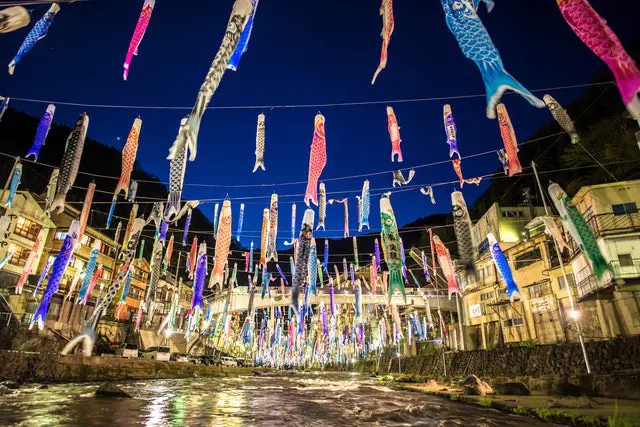
A hot spring located in Oguni town in the Aso district known for their steam baths. The traditional townscape around the hot springs is well known among visitors.
Website: Tsuetate Onsen
For more details about the Tsuetate hot springs, please read Rediscover Ancient Japan at Tsuetate Onsen in Kumamoto.
19. Kurokawa Onsen
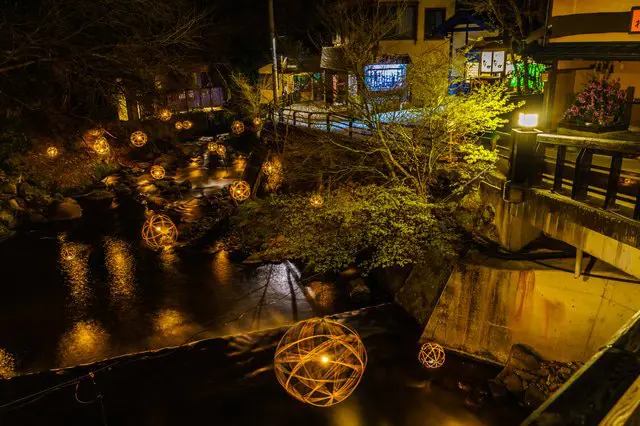
A hot spring in Oguni town in the Aso district is known for the charming town with neighborhoods with traditional houses like the ones from the Edo period in Japan.
Website: Kurokawa Onsen
Tour of Kurokawa Onsen, Kumamoto Castle, and More (leaves from Fukuoka)
20. Kikuchi Gorge
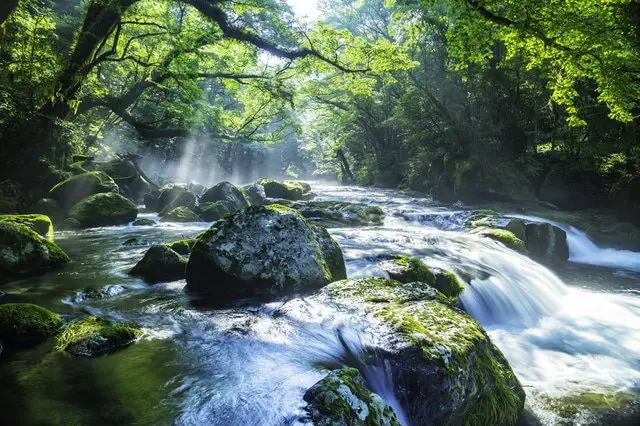
A spot to enjoy the refreshing sounds of the river among the lush greens is in this scenic ravine. During the hot summers of Kumamoto, the cool waters in the gorge are around 13 degrees Celsius and are a perfect spot to cool down.
Address: Kumamoto, Kikuchi city, Fukaba Nishiyunoura 5026
Website: Kikuchi Gorge
21. Nabegataki Falls
This is a beautiful waterfall located in Oguni. You can even go behind the falls and see the magnificent scenery from there.
For more details about the falls, please read The Wonderful View at Nabegataki Falls in Oguni, Kumamoto.
Address: Kumamoto, Aso district, Oguni, Kurobuchi
Website: Nabega Falls (Japanese)
22. Daikanbo
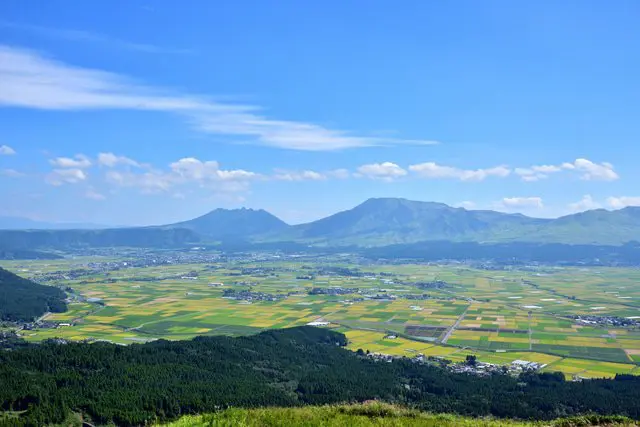
Daikanbo is an area with the highest mountain ranges on the outer rim of the northern Aso mountains. This is a spot where you can witness the panoramic view of the five mountains of Aso, Mt. Nakadake, Mt. Neko, Mt. Takadake, Mt. Eboshi, and Mt. Kishima, all at once.
The way the mountains stand side by side n this area is often referred to as "the sleeping Buddha".
Address: Kumamoto, Aso city, Yamada Daikanbo
23. Kumagawa (Kuma River)
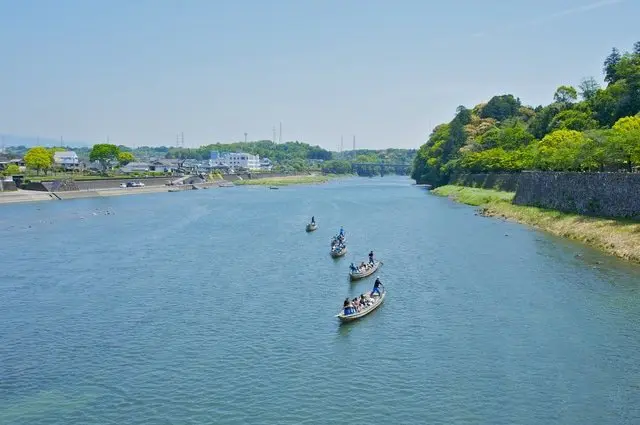
This is a freshwater river that runs through Hitoyoshi and Kuma areas. It is known as a scenic spot mainly during the autumn. Many visitors ride small boats from upstream to downstream to enjoy the seasonal views.
24. Okoshiki Shore
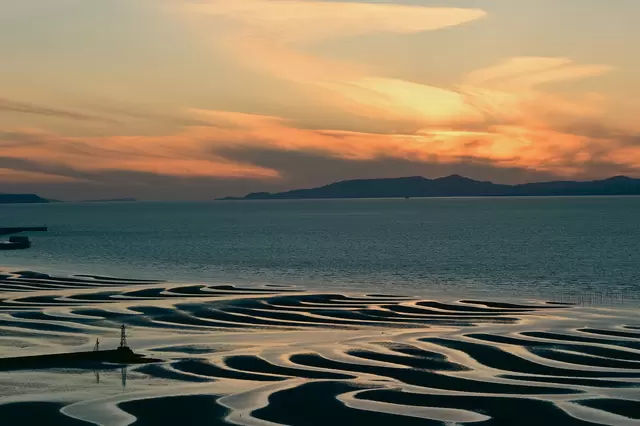
This scenic shore is on the northern side of the Uto peninsula and has been nominated as part of "Japan's Top 100 beaches" and "Japan's Top 100 sunset spots". During the time of the tide, beautiful ripple marks appear on the sand, creating a spectacular scenery along with the sunset.
Address: Kumamoto, Uto city, Shimooda
25. Shirakawa Suigen
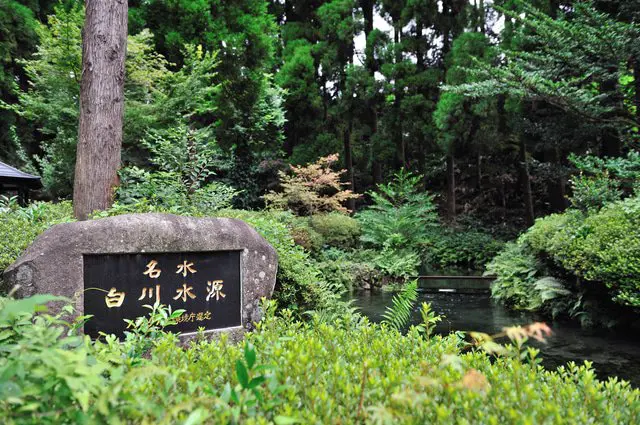
A natural water source in southern Aso where over 60 tons of water pours out every day. Here, you will be able to taste the fresh and natural water from the fountain on the spot. Admission to the Shirakawa Suigen is 100 yen.
Address: Kumamoto, Aso district, Aso village, Shirakawa 2040
Website: Shirakawa Suigen (Japanese)
26. Road of Laputa - Milk Road
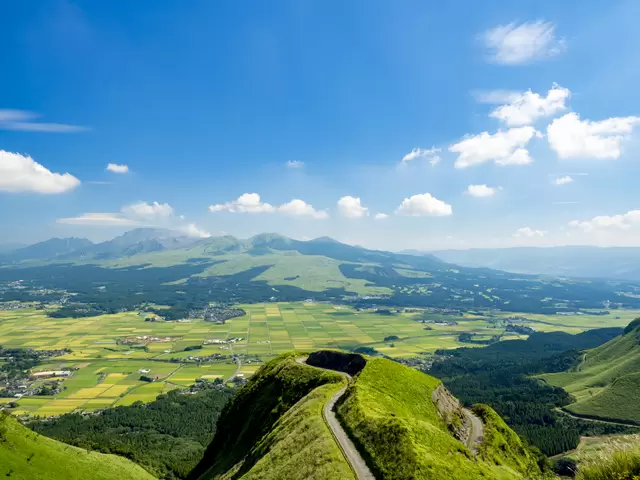
The milk road is a road extending from the southern rim of Mt. Aso toward the northeastern area. Along the way, you will be able to witness a fabulous sight that looks like a scene from the famous Ghibli movie, "Laputa, Castle in the Sky". The way the clouds form makes the Road of Laputa seem as if there are islands floating in the sky.
Address: Kumamoto, Aso city, Kario
27. Kusasenrigahama
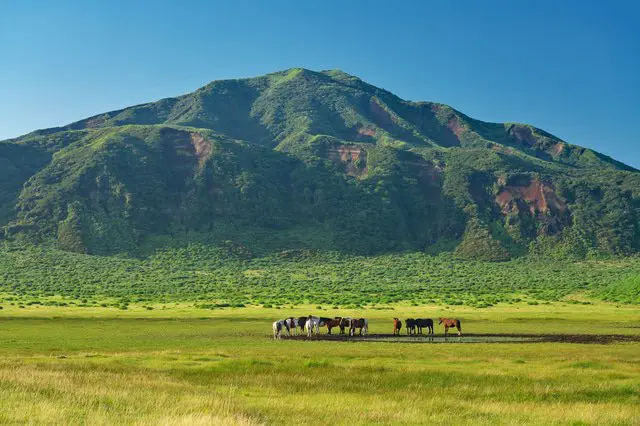
North of Mt. Eboshi, you will find a vast field extending 1 km all around. You will find horses freely wandering and eating grass at the scenic Kusasenrigahama. Horse riding activities are available here as well.
Address: Kumamoto, Aso city, Kusasenrigahama
Festivals and Events in Kumamoto
Kumamoto is a history-rich area where many ancient festivities, such as the Ushibuka Haiya festival and the annual Autumn Festival at Fujisaki Hachimangu shrine, are held.
April: Ushibuka Haiya Festival
As the "original Haiya bushi" music plays, women in colorful kimono perform an energetic dance that has been passed down since the Edo period. Ushibuka is a port town and many gestures within the dance include motions of raising the sail and drawing the nets with fish.
Address: Kumamoto, Amakusa city, Ushibuka, Ushibuka Haiya Ohashi
Website: Ushibuka Haiya Festival (Japanese)
August: Yamaga Lantern Festival
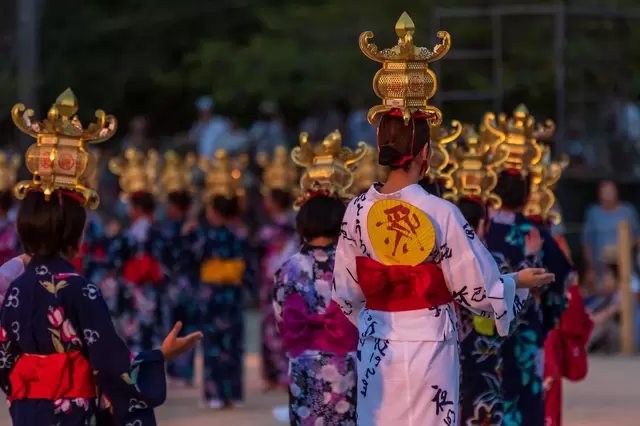
A summer festival that has been celebrated for ages. This mystical festival is known for the "Sennin Toro Odori" where women dance with lanterns on their head while the authentic Yoheho bushi music plays.
Address: Kumamoto, Yamaga city, Yamaga 351 Yamaga elementary school playground
Website: Yamaga Lantern Festival (Japanese)
September: Annual Autumn Festival at Fujisaki Hachimangu Shrine
When the rest of Japan is celebrating Respect for the Aged Day, on the third Sunday in September, Kumamoto has a summer festival where a procession of people dressed in festive outfits parades around the town among the sounds of drums and trumpets playing about. An iconic part of this festival is the people marching around shouting "Dookai Dookai" and having a decorative horse called the Kazariuma drawn by men called the zuibyo. This is a staple event of the summer in Kumamoto.
Address: Kumamoto, Kumamoto city, Chuo ward, Igawabuchi 3-1 Fujisaki Hachimangu Shrine
Website: Annual Autumn Festival (Japanese)
September - November: Castle Festival

During this time around the Kumamoto Castle, traditional performances of ancient martial arts, drums, horseback archery and Noh theater can be seen.
Address: Kumamoto, Kumamoto city, Chuo ward, Honmaru 1-1
Website: Castle Festival (Japanese)
Local Dishes of Kumamoto
As tourists come visit Kumamoto, many leave saying "the food of Kumamoto is so good!". If you happen to visit Kumamoto, try the local tonkotsu pork broth ramen and Dagojiru soup. Here are some recommendations of must-eat dishes in the area.
Tonkotsu Ramen
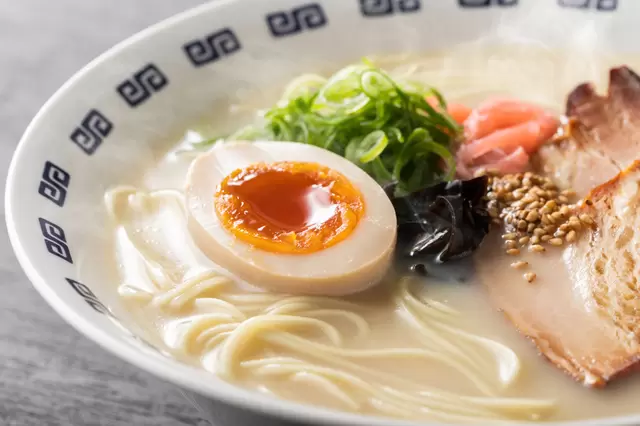
While Hakata and Kagoshima are known for their tonkotsu pork broth ramen, in Kumamoto, they add chicken broth along with the pork broth soup. As a topping, toasted garlic is added for an extra kick in the taste. Try the Kumamoto version of the tonkotsu pork broth ramen with its mild soup and garlic flavoring.
Basashi
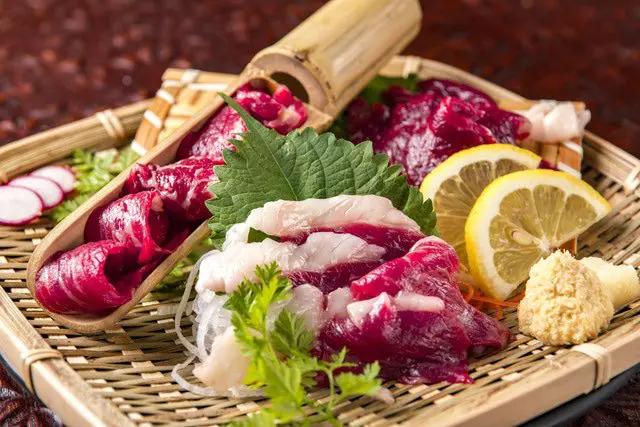
Raw horse meat or "basashi" is a local delicacy of Kumamoto. Unlike other meats, horse meat is very tender and does not have a distinctive scent. It is frequently eaten with a Kyushu-style sweet soy sauce, garlic or ginger.
Taipien
Originally, this was a local dish of Fuzhou in the Fujian province of China that spread widely in Kumamoto and Nagasaki during the Meiji period. It is a light Chinese soup-based dish with harusame rice noodles, napa cabbage, and fried egg.
Dagojiru
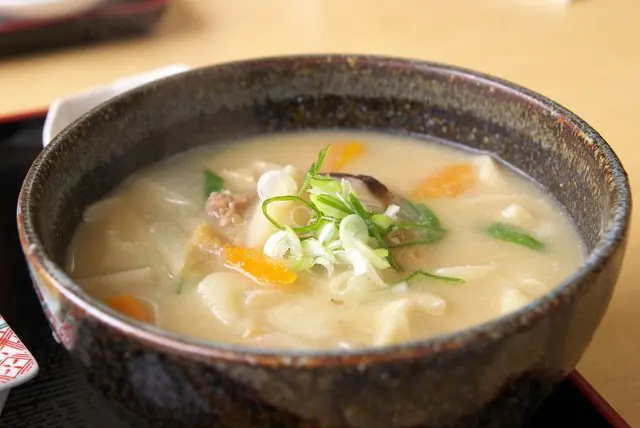
In the Kumamoto dialect, dago stands for dango cakes. Inside a soup made of stock, kneaded cakes made of flour are added along with carrots, chicken, maitake mushrooms, and scallions. Among the people of Kumamoto, many of them consider this soup to be the flavor of home.
Karashi Renkon
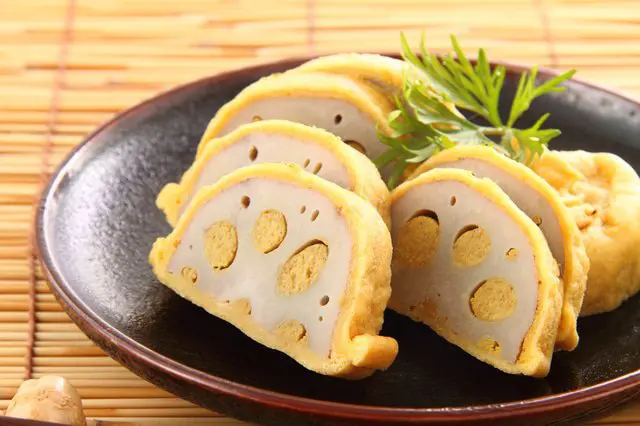
Karashi renkon is a lotus root filled with a spicy wheat paste flavored with Japanese mustard that has been fried with a thin coat of batter. With a shelf life of only 2-3 days, it is recommended to be eaten on the spot instead of making it into a souvenir.
Akaushi - Kurogewagyu
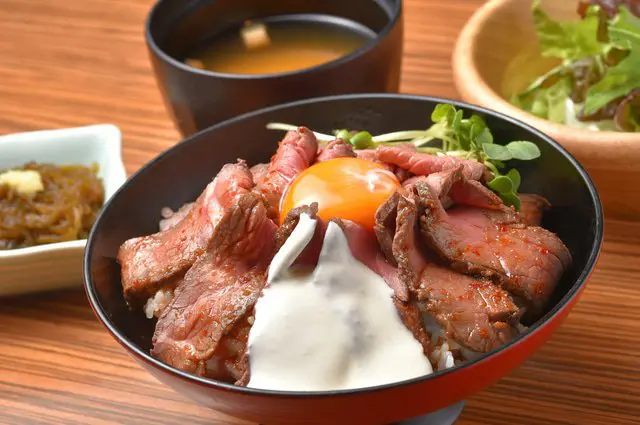
The Akaushi and Kurogewagyu cows raised in the Aso area of Kumamoto are known for their rich flavors and tasty red meat. You can savor the delicious meats in local steak shops and restaurants in Kumamoto.
Souvenirs of Kumamoto
Snacks
For those looking for something sweet to take back, the "Brown sugar donut bars" have a unique and light texture when bitten into. For an iconic confectionary from Kumamoto, the "Homare no Jindaiko" is a traditional red bean treat that has been loved for ages. Another is the "Mushagaeshi", which is a smooth red bean paste wrapped in a pie crust.
Crafts
For traditional crafts, the Higo Zougan, Yamaga Toro, Hanatebako, and Kijiuma are recommended.
Photo courtesy of Kumamoto prefecture.
Higo Zougan is a technique used to decorate armor and sword guards for katanas. The distinctive elegant designs are the main feature of this technique. Lately, it has been used for necklaces and tie pins.
Yamaga Toro is rather large, however, it is made out of paper and is very light. It is a great souvenir when visiting Yamaga.
Photo courtesy of Kumamoto prefecture.
Hanatebako and Kijiuma (toys in front of the photo above) are traditional crafts of the Hitoyoshi region and have been made for over 800 years.
Like the British War of Roses, there were battles between powers during the middle ages in Japan as well. Toward the end of the war between the Genji and Heike clans (1180 - 1185), during the final battle of Dan no Ura, the people of Heike who lost hid in the Hitoyoshi area. As they lived in the town, the people began making elaborate Hanatebako and Kijiuma crafts remembering the graceful days spent in the capital. Within the gorgeous designs, you can feel the warmth of the people making them.
Kumamon Merchandise
Lately, the regional character, Kumamon has become a very popular motif for lots of merchandise and snacks.
Kumamoto Dialect You Can Use During Your Trip
Those who learned Japanese outside of Japan might realize that the Japanese spoken in Kumamoto is a little different from the standard Japanese you are used to hearing. In Kumamoto, there is a prefectural dialect that is still being used today.
If you know some basic words in the Kumamoto dialect, perhaps your trip may become even more interesting. Here are a few words in the Kumamoto dialect as an example.
Yoka
"Yoka" has two meanings. One means "good" ("yoi") and another means "do not need" ("iranai"). You would have to decipher which it means from the conversation. If one says "yokane", it mostly has a positive meaning of "good" or "nice".
Naka
"Naka" means "nothing". It is used when expressing something is not there or negating a phrase.
Example 1: "shoyu no naka" means "there is no soy sauce".
Example 2: "umonaka" means "it is not tasty".
Umaka
"Umaka" means "delicious". If you visit a restaurant and say "taigya umaka" ("that was very delicious"), they may be very happy to hear that from you.
Nanba
"Nanba" is used to start a sentence that begins with "what". Such as "nanba shiyotto" (what are you doing?).
~ken / ~ daken
When a phrase ends with -ken or -daken, it is equivalent to "because" in English.
Example: Umakaken, tabenasse. (You should try this because it's tasty).
Taigya
"Taigya" also has two meanings depending on how it is used. It can mean "very" or "moderate" according to the context. For instance, "taigya yoka"means "very good", while "taigya ni shitoki nasai" means "keep it to a moderation".
Tottotto
"Tottotto" means "are you saving/holding that?". Mainly it is used when asking whether a person owns or has a place or a thing.
Example: Koko tottotto? (Are you saving this space?)
Hotels in Kumamoto

In central Kumamoto city, there are plenty of business hotels, capsule hotels, and other accommodations. At places such as Kurokawa Onsen and Tsuetate Onsen, there are traditional Japanese-style ryokan inns. There are even low-cost ryokan inns starting as low as 5000 yen per person per night. If you manage to stay in ryokan inns in hot spring spots, you may be able to enjoy an authentic Japanese experience.
For more information about Tsuetate Onsen, read Rediscover Ancient Japan at Tsuetate Onsen in Kumamoto.
Weather and Attire in Kumamoto
Throughout the year, the temperature in Kumamoto is higher than Tokyo. During the summer, it can even go over 40 degrees Celsius.
Being between mountains, it is extremely humid and first-time visitors may be surprised at the difference. Protecting yourself from heat stroke and sunburns are highly recommended.
During the winter, it rarely snows, however, the temperature does drop below zero.
It is best to be prepared with warm clothes such as hats and thick coats especially in the Aso area where the temperature drops 3 to 5 degrees lower than Kumamoto city.
In Conclusion: In Order to Enjoy Tourism in Kumamoto

The best time to visit Kumamoto is during the spring and autumn. During the autumn, the gorgeous view of the leaves at Kuma River is a sight to see.
For those looking to have a fun time, going during the annual Autumn Fujisaki Hachimangu Festival might be fun too. In addition to that, the Zuibyo held on the third Monday of September (Respect for the Aged Day) is an energetic festival that fits the land of fire, Kumamoto.
With beautiful scenery and delicious foods. Prepare yourself for the heat and cold and enjoy touring around this wonderful prefecture.
Other Helpful Information For Your Trip
How much does food cost in Japan? Let's set a budget before leaving.
Do you need to exchange foreign currency?
If you run out of cash, find an ATM with a "PLUS" mark. You will be able to use a foreign cashing service easily.
It is helpful to use simple Japanese phrases when staying at hotels. Here are a few you can use:
In Japan, there are useful Wi-Fi services such as the "Japan Connected-free Wi-Fi". It is recommended to download the app on your phone prior to coming to Japan.
Photos by Pixta












































![[Coupon Available] Attention Overseas Winter Sports Fans! Nagano's Sports Depot Has Evolved](https://resources.matcha-jp.com/resize/720x2000/2026/01/05-254819.webp)